-
 Bitcoin
Bitcoin $107,467.9126
1.26% -
 Ethereum
Ethereum $2,447.5288
-0.12% -
 Tether USDt
Tether USDt $1.0005
0.00% -
 XRP
XRP $2.1921
0.13% -
 BNB
BNB $647.2897
0.50% -
 Solana
Solana $144.8627
-0.37% -
 USDC
USDC $0.9996
-0.03% -
 TRON
TRON $0.2732
0.10% -
 Dogecoin
Dogecoin $0.1652
-0.18% -
 Cardano
Cardano $0.5700
-2.87% -
 Hyperliquid
Hyperliquid $37.0274
-1.81% -
 Bitcoin Cash
Bitcoin Cash $484.6957
0.19% -
 Sui
Sui $2.7354
-2.19% -
 Chainlink
Chainlink $13.1727
-1.49% -
 UNUS SED LEO
UNUS SED LEO $8.9978
-0.04% -
 Stellar
Stellar $0.2421
-2.33% -
 Avalanche
Avalanche $17.5633
-3.51% -
 Toncoin
Toncoin $2.8476
-1.94% -
 Shiba Inu
Shiba Inu $0.0...01166
-0.56% -
 Litecoin
Litecoin $85.1071
0.09% -
 Hedera
Hedera $0.1502
-2.96% -
 Monero
Monero $310.2774
-1.64% -
 Dai
Dai $0.9999
-0.01% -
 Polkadot
Polkadot $3.3584
-1.88% -
 Ethena USDe
Ethena USDe $1.0003
-0.04% -
 Bitget Token
Bitget Token $4.4443
2.90% -
 Pi
Pi $0.6242
14.04% -
 Uniswap
Uniswap $6.9774
-2.86% -
 Pepe
Pepe $0.0...09535
-5.05% -
 Aave
Aave $256.7574
-3.35%
Can the head and shoulders bottom pattern really catch the reversal? How to confirm the neckline breakthrough?
The head and shoulders bottom pattern signals a potential bullish reversal in crypto, confirmed by volume surge and neckline breakout.
Jun 26, 2025 at 10:49 am
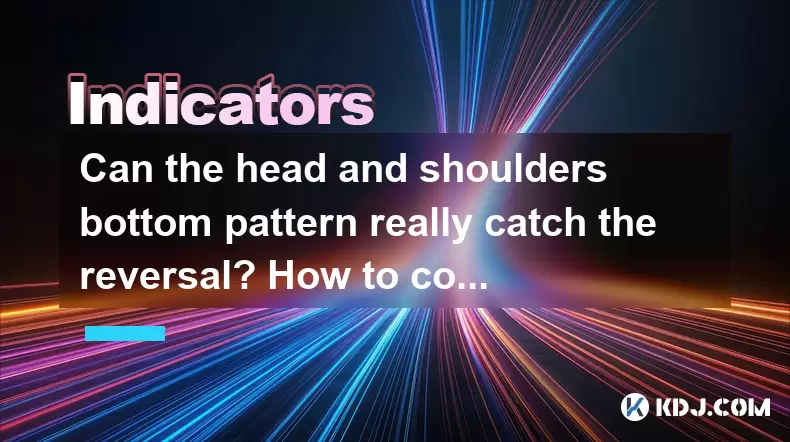
Understanding the Head and Shoulders Bottom Pattern in Cryptocurrency Trading
The head and shoulders bottom pattern, also known as the inverse head and shoulders, is a reversal chart formation commonly used by traders to identify potential bullish reversals in cryptocurrency markets. This pattern typically appears at the end of a downtrend and signals that the selling pressure has weakened and buying momentum may soon take over.
In this setup, there are three distinct lows — the left shoulder, the head (the lowest point), and the right shoulder (which is usually symmetrical with the left). These lows are connected by a horizontal or slightly sloping line called the neckline. The key to interpreting this pattern lies in how price interacts with this neckline.
Important: While this pattern can be highly effective, it should not be relied upon in isolation. It must be confirmed using volume analysis and price action.
How to Identify the Components of the Inverse Head and Shoulders Pattern
To effectively utilize this pattern, traders need to correctly identify its components:
- Left Shoulder: This forms after an extended downtrend and represents a local low.
- Head: A deeper low formed after the left shoulder, indicating stronger bearish momentum.
- Right Shoulder: A higher low than the head, showing that sellers are losing control.
- Neckline: A resistance level drawn connecting the two peaks between the shoulders.
Correct identification of these elements ensures that traders do not misinterpret other similar-looking patterns like double bottoms or triple bottoms.
Critical Tip: Use candlestick confirmation such as bullish engulfing patterns or hammer candles near the right shoulder for added reliability.
Confirming the Neckline Breakout in the Head and Shoulders Bottom Pattern
A breakout above the neckline is considered a strong signal that the trend is reversing from bearish to bullish. However, false breakouts are common in volatile crypto markets, so confirming the validity of the breakout is crucial.
Here’s how to confirm a genuine neckline breakout:
- Volume Surge: A significant increase in trading volume during the breakout indicates strong buyer interest.
- Close Above Neckline: Price must close decisively above the neckline, preferably on a daily or 4-hour chart.
- Retest of the Neckline: After breaking out, the price often retests the neckline as new support. A successful retest confirms the strength of the breakout.
Caution: Avoid entering immediately upon initial touch of the neckline. Wait for a confirmed close above it along with increased volume.
Measuring the Potential Price Target After a Valid Breakout
Once the neckline is broken and confirmed, traders can estimate the minimum price target of the move by measuring the vertical distance from the head to the neckline.
This measured distance is then projected upward from the breakout point. For example, if the head is $100 below the neckline and the breakout occurs at $500, the projected price target would be $600.
It's important to note that this projection serves only as a guideline. Actual price movement can vary due to market sentiment, macroeconomic events, or changes in exchange listings.
Strategy Tip: Place take-profit orders around the projected target zone but remain flexible based on real-time market conditions.
Common Mistakes When Trading the Head and Shoulders Bottom Pattern
Even experienced traders can fall into traps when interpreting this pattern. Here are some frequent errors:
- Premature Entry: Jumping into a trade before the neckline breakout is confirmed.
- Ignoring Volume: Failing to check whether volume supports the breakout.
- Misidentifying the Pattern: Confusing the head and shoulders bottom with other reversal patterns.
- Overlooking Market Context: Applying the pattern in a ranging or sideways market where it’s less reliable.
Avoid These Errors: Always cross-validate with moving averages, RSI, or MACD to filter out weak signals.
Practical Steps to Trade the Head and Shoulders Bottom Pattern
For those looking to implement this strategy in live crypto trading, follow these steps carefully:
- Identify a clear downtrend followed by three distinct lows forming the inverse head and shoulders structure.
- Draw the neckline by connecting the swing highs between the left shoulder and head, and between the head and right shoulder.
- Monitor for a breakout above the neckline with increased volume.
- Wait for a close above the neckline on a time frame suitable for your trading strategy (e.g., 4-hour or daily).
- Enter a long position once the breakout is confirmed, ideally after a retest of the neckline as support.
- Set a stop-loss just below the right shoulder or the head, depending on risk tolerance.
- Calculate the price objective by measuring the distance from the head to the neckline and project it upwards from the breakout point.
Note: Backtesting this pattern on historical charts of major cryptocurrencies like BTC, ETH, or SOL can help validate its effectiveness under different market conditions.
Frequently Asked Questions
Q: Can the head and shoulders bottom pattern appear on any time frame?
Yes, this pattern can occur across multiple time frames including 1-hour, 4-hour, daily, and weekly charts. However, higher time frames offer more reliable signals due to reduced noise and greater liquidity.
Q: What if the right shoulder is higher than the left shoulder?
This is acceptable and even preferable. A higher right shoulder indicates strengthening demand and increases the likelihood of a successful breakout.
Q: Is it necessary to wait for a retest of the neckline before entering a trade?
While not mandatory, waiting for a retest adds confluence and improves the risk-reward ratio. Skipping this step increases the chance of entering on a false breakout.
Q: How does the head and shoulders bottom differ from the double bottom pattern?
The head and shoulders bottom has three lows with the middle one being the deepest, while the double bottom consists of only two equal lows. Additionally, the neckline in a head and shoulders pattern can be slanted, whereas in a double bottom it’s typically horizontal.
Disclaimer:info@kdj.com
The information provided is not trading advice. kdj.com does not assume any responsibility for any investments made based on the information provided in this article. Cryptocurrencies are highly volatile and it is highly recommended that you invest with caution after thorough research!
If you believe that the content used on this website infringes your copyright, please contact us immediately (info@kdj.com) and we will delete it promptly.
- Ethereum Ecosystem's $7.3B Fee Bonanza: Tether, Circle, Lido Lead the Charge
- 2025-06-26 17:05:11
- Bitcoin, Cryptocurrency, Price Rise: What's the Deal?
- 2025-06-26 16:30:11
- Pepe Mania: Whale Buys and the Meme Coin Frenzy
- 2025-06-26 16:50:13
- Crypto, Meme Coins, and Presales: Is Troller Cat the Next Big Thing?
- 2025-06-26 17:50:15
- Bitcoin Price: Riding the Upward Trend – Will BTC Hit New Highs?
- 2025-06-26 16:50:13
- Bitcoin Price Prediction, June 27: Will the Rally Continue?
- 2025-06-26 17:07:13
Related knowledge
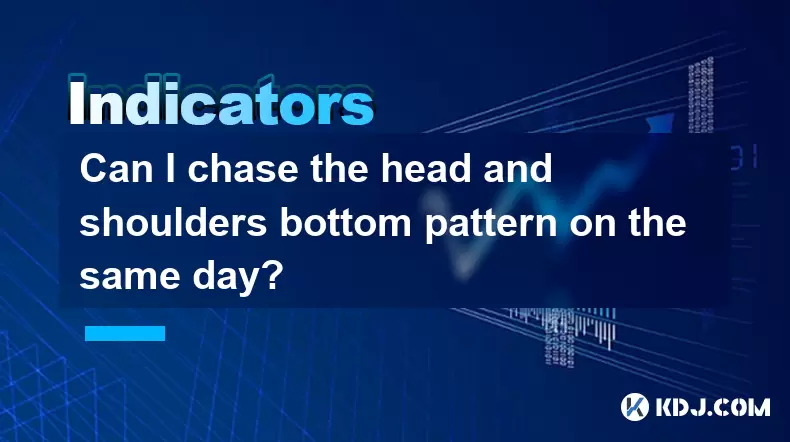
Can I chase the head and shoulders bottom pattern on the same day?
Jun 26,2025 at 06:14pm
Understanding the Head and Shoulders Bottom Pattern in Cryptocurrency TradingThe head and shoulders bottom pattern, also known as the inverse head and shoulders, is a reversal chart pattern commonly observed in cryptocurrency price charts. It signals a potential shift from a downtrend to an uptrend. The structure consists of three distinct lows: the lef...
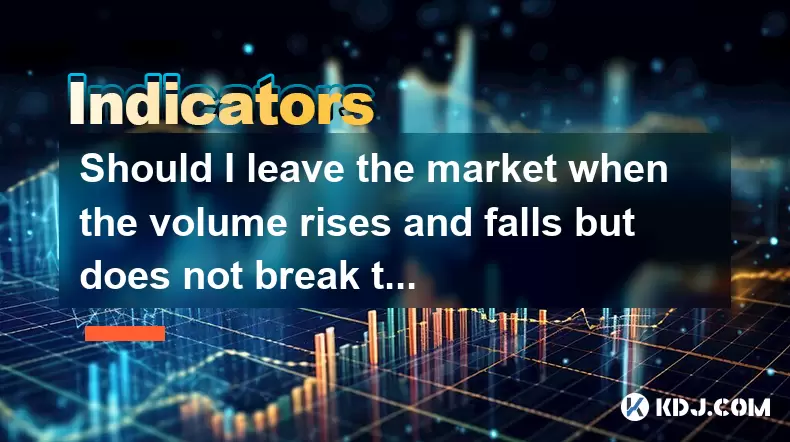
Should I leave the market when the volume rises and falls but does not break the 5-day line?
Jun 26,2025 at 06:08pm
Understanding Market Volume and the 5-Day Moving AverageWhen traders talk about market volume, they're referring to the total number of shares or contracts traded during a specific period. In cryptocurrency trading, volume plays a crucial role in confirming trends and predicting potential reversals. The 5-day moving average (5DMA) is a short-term indica...
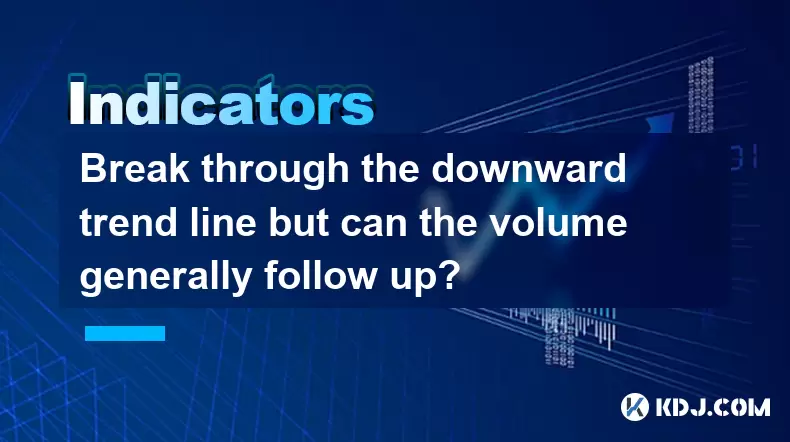
Break through the downward trend line but can the volume generally follow up?
Jun 26,2025 at 05:28pm
Understanding the Significance of Breaking a Downward Trend LineIn technical analysis, a downward trend line represents a resistance level formed by connecting two or more high points in price action. When the price breaks above this line, it suggests that the selling pressure may be weakening and that buyers are gaining control. This is often seen as a...
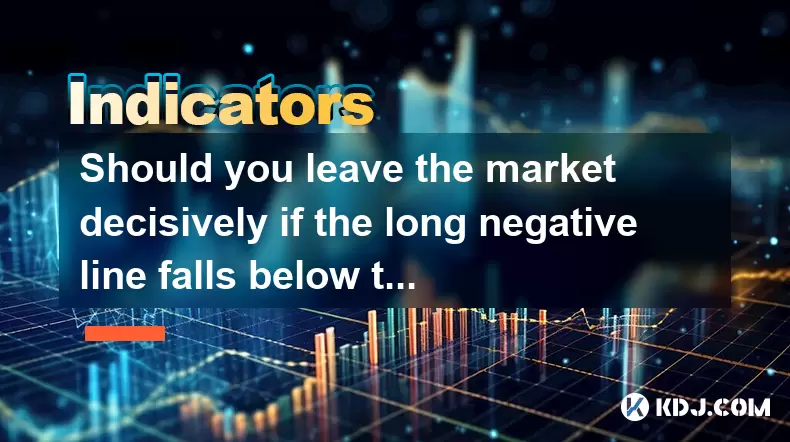
Should you leave the market decisively if the long negative line falls below the 10-week line?
Jun 26,2025 at 06:29pm
What Is a Crypto Wallet and Why Do You Need One?A crypto wallet is a digital tool that allows users to store, send, and receive cryptocurrencies like Bitcoin, Ethereum, and others. Unlike traditional wallets that hold physical money, crypto wallets do not actually store the coins themselves. Instead, they manage the private keys and public addresses nec...
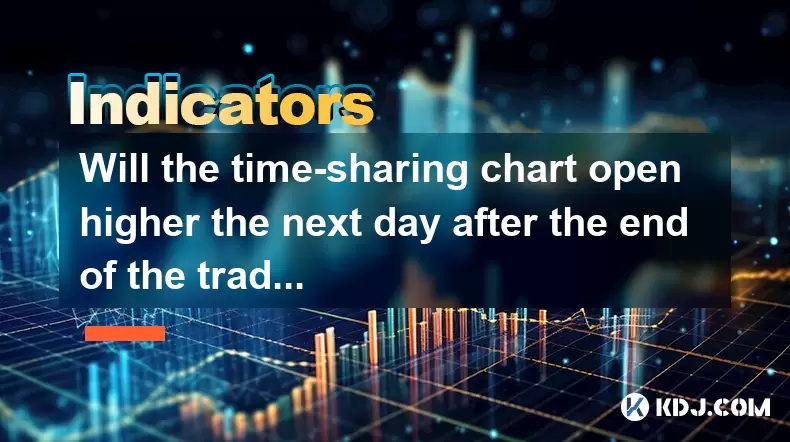
Will the time-sharing chart open higher the next day after the end of the trading?
Jun 26,2025 at 04:35pm
Understanding Time-Sharing Charts in Cryptocurrency TradingIn the realm of cryptocurrency trading, time-sharing charts, often referred to as tick or intraday charts, play a crucial role in analyzing short-term price movements. These charts display price fluctuations over very small time intervals, such as 1 minute, 5 minutes, or 15 minutes. Traders rely...
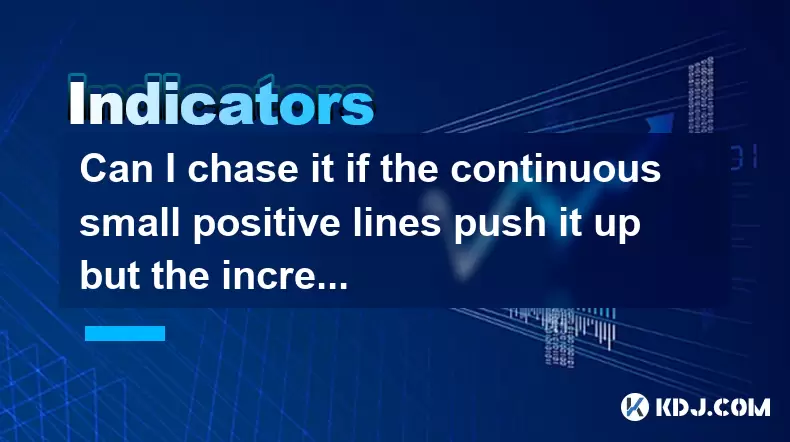
Can I chase it if the continuous small positive lines push it up but the increase is limited?
Jun 26,2025 at 03:42pm
Understanding the Concept of Continuous Small Positive LinesIn the realm of cryptocurrency trading, continuous small positive lines refer to a pattern where an asset's price consistently rises in small increments over a period. These movements are typically observed on candlestick charts and can indicate underlying strength or accumulation by larger pla...

Can I chase the head and shoulders bottom pattern on the same day?
Jun 26,2025 at 06:14pm
Understanding the Head and Shoulders Bottom Pattern in Cryptocurrency TradingThe head and shoulders bottom pattern, also known as the inverse head and shoulders, is a reversal chart pattern commonly observed in cryptocurrency price charts. It signals a potential shift from a downtrend to an uptrend. The structure consists of three distinct lows: the lef...

Should I leave the market when the volume rises and falls but does not break the 5-day line?
Jun 26,2025 at 06:08pm
Understanding Market Volume and the 5-Day Moving AverageWhen traders talk about market volume, they're referring to the total number of shares or contracts traded during a specific period. In cryptocurrency trading, volume plays a crucial role in confirming trends and predicting potential reversals. The 5-day moving average (5DMA) is a short-term indica...

Break through the downward trend line but can the volume generally follow up?
Jun 26,2025 at 05:28pm
Understanding the Significance of Breaking a Downward Trend LineIn technical analysis, a downward trend line represents a resistance level formed by connecting two or more high points in price action. When the price breaks above this line, it suggests that the selling pressure may be weakening and that buyers are gaining control. This is often seen as a...

Should you leave the market decisively if the long negative line falls below the 10-week line?
Jun 26,2025 at 06:29pm
What Is a Crypto Wallet and Why Do You Need One?A crypto wallet is a digital tool that allows users to store, send, and receive cryptocurrencies like Bitcoin, Ethereum, and others. Unlike traditional wallets that hold physical money, crypto wallets do not actually store the coins themselves. Instead, they manage the private keys and public addresses nec...

Will the time-sharing chart open higher the next day after the end of the trading?
Jun 26,2025 at 04:35pm
Understanding Time-Sharing Charts in Cryptocurrency TradingIn the realm of cryptocurrency trading, time-sharing charts, often referred to as tick or intraday charts, play a crucial role in analyzing short-term price movements. These charts display price fluctuations over very small time intervals, such as 1 minute, 5 minutes, or 15 minutes. Traders rely...

Can I chase it if the continuous small positive lines push it up but the increase is limited?
Jun 26,2025 at 03:42pm
Understanding the Concept of Continuous Small Positive LinesIn the realm of cryptocurrency trading, continuous small positive lines refer to a pattern where an asset's price consistently rises in small increments over a period. These movements are typically observed on candlestick charts and can indicate underlying strength or accumulation by larger pla...
See all articles
























































































